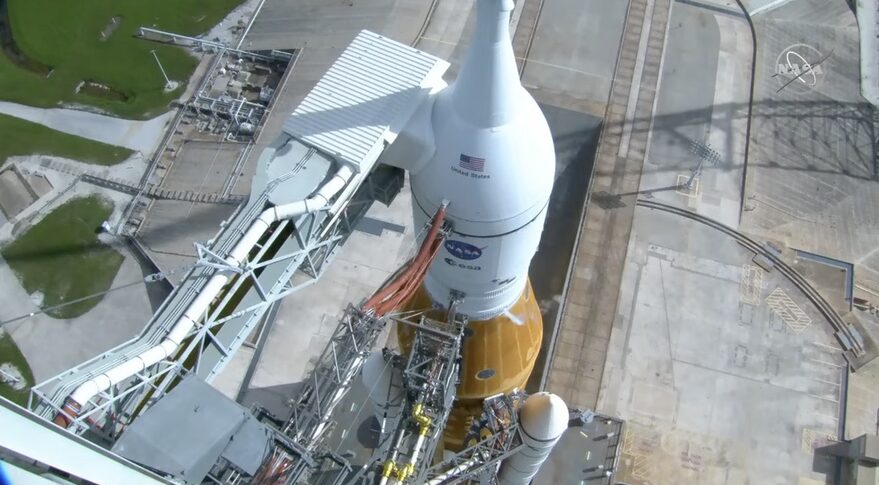NASA has successfully completed the test refueling of the SLS lunar rocket. During it, small hydrogen leaks were detected, but they remained within acceptable limits. The next launch opportunity will appear on September 27.

SLS Test refueling
On September 21, NASA announced that the test refueling of the SLS lunar rocket with liquid hydrogen and oxygen was successful. The test lasted the whole day. Its main task was to confirm that the addition to the sealing structure and the new loading procedure would reduce the loss of fuel, which is in a liquid state only due to the ultra-low temperature.
It was the hydrogen leak that was the main problem that prevented the Artemis I mission from launching in early September. This time, it was not possible to completely avoid it either. However, in the main hose cables of the tail mast, it never exceeded the permitted 4 percent. In the additional feed line, it reached 5 percent at some point, but then the engineers managed to reduce it.
In general, NASA says that this time the SLS is ready for the first unmanned flight under the Artemis program. The next launch window will open on September 27.
Other possible problems
However, the problem with the supply of liquid hydrogen is not the only one that can prevent the launch this time. First of all, this concerns the emergency flight termination system, the certificate of conformity of which expired during the previous launch attempt.
The US Space Forces, which ensure the functioning of this system, refused to make any decision until the end of testing the refueling system. Now they have to say something about whether it is necessary to carry out any work in this direction.
The weather can also make its own adjustments. Now forecasters are watching the atmospheric disturbance Invest 98L flying over the Caribbean. In a few days it may turn into a storm. If it goes in the direction of Florida, then the launch will not just be postponed, but maybe canceled. After all, in this case, the rocket will have to be delivered to the Vehicle Assembly Building again.
According to spacenews.com
Follow us on Twitter to get the most interesting space news in time
https://twitter.com/ust_magazine

